Radish: the health benefits and harms of a vegetable
Medicines from the garden are the safest, benefit the human body with a minimum of harm. Radish known for a long time. Everyone knows about its beneficial properties. But there are many types of vegetables, and each has its own unique composition. You need to know how to use the product for eating, treating various diseases.
Content:
- The main types of radish, their features
- Useful properties of a vegetable
- Harm and contraindications
- The use of different types of radish in medicine
- How to choose and store a radish correctly
The main types of radish, their features
It is known about the radish that, like cabbage, it belongs to the Cruciferous family. The inhabitants of the planet grow different types of vegetables. In Russia, they love black radish with a vigorous taste and aroma. In Asian countries, radish is sweeter, and it also differs in color and shape.
Four types of radish are common among gardeners:
- White winter radish grown by those who prefer tender roots, without strong bitterness. The flesh of the vegetable is juicy, with medium sharpness. Round fruits can weigh three hundred grams or more.
- Black radish known for its pungent taste and pungent aroma. Despite the black skin, the flesh of the vegetable is white. The flat-rounded root crop is well preserved during the winter. It contains many useful substances, vitamins that help a person meet spring healthy, with strong immunity.
- The green radish that came to us from Central Asia also contains a lot of vitamins. And the leaves of the vegetable are rich in essential oils, calcium, phosphorus, iron
- Daikon radish originally from Japan, it is low in calories and tastes good. And in appearance, it does not look like a traditional vegetable - it is long with white flesh. But in the presence of antioxidants, it has no equal. It is a pity that it is not stored for a long time, because its antibacterial properties help to strengthen immunity during colds.
Each species has many different varieties, but their composition is the same. They differ only in the shape and color of the skin.
Useful properties of a vegetable
For all types of vegetables, the benefit lies in the fact that the radish can:
- cure colds, coughs
- strengthen the immune system
- normalize the functions of the organs of the gastrointestinal tract
- eliminate swelling in tissues
- cleanse the body of toxins and toxins
Radish is given to people after a long illness to improve appetite. Recommend the product to those who have an irregular heart rhythm. Vegetable juice helps relieve joint inflammation.
Due to the presence of bitterness in radish, it can restore damaged tissues in case of frostbite, blood supply in case of neuralgia, radiculitis, myositis. Even the paralysis of the tongue is removed by the radish by chewing it for a while. Bitter pulp helps to expel worms from the body.
All types of radish are useful for the human body with the correct use of the root crop.
Disinfect purulent wounds, ulcers with radish juice, washing the affected areas. The more bitterness in the root vegetable, the more effective the treatment will be. Therefore, black radish is more often used in folk medicine. And to combat intestinal atony, soft types of vegetables are suitable - daikon, green radish. Vegetable salads are recommended for nursing mothers, as radish increases the amount of breast milk.
Harm and contraindications
But those elements in the composition of the radish that are beneficial can cause pathological conditions in humans. The high content of essential oils is detrimental to people with heart and nervous system diseases, as their effect is unnecessarily arousing.
Coarse fiber is dangerous for those who have stomach and duodenal ulcers. With diarrhea, you should not get carried away with dishes made from black radish. Better to use the daikon variety or the Margelan type of vegetable.
The choleretic effect of radish will negatively affect the health of people with urolithiasis, activating the movement of stones in the organs of the genitourinary system.
For pregnant women, especially in the first trimester of pregnancy, excessive consumption of radish will result in miscarriage and premature birth. And during lactation, the vegetable will help increase the amount of milk, but will make it taste bitter, which will interrupt the feeding of the newborn. In this case, it is better for women to consume sweet varieties of vegetables. Before starting radish treatment, you need to make sure that the product will benefit the body, and not harm.
The use of different types of radish in medicine
In order for the radish to be beneficial to the body, you need to know how to use it to treat diseases:
- The symptom of cough is relieved by drinking radish juice along with honey. To do this, take a root vegetable weighing about three hundred grams, rub it on a fine grater. The squeezed juice is mixed with honey. The medicinal mixture should be infused for some time in a dark and cool place. They give the medicine three times a day, a tablespoon to children, two to adults. The cough disappears after a week of root vegetable treatment.
- Outwardly, chopped radish mixed with horseradish gruel relieves cough. At night, rub the chest and back of the patient with a mixture, followed by wrapping.
- Constipation goes away if you dilute two tablespoons of root vegetable juice in a glass of water. Drink the remedy throughout the day, divided into four doses.
- The juice is similarly used in the treatment of cholecystitis. For a liter of water, take twenty milliliters of radish juice, adding a little lemon juice. First, they drink one hundred milliliters of the drink a day, then increase to four hundred. The course of treatment is five to eight weeks, it can be repeated every six months.
- Radish juice together with beet juice, carrots are used in the treatment of hypertension.
- For joint pain, rub in a composition of three parts of fresh radish juice, two parts of honey and one part of vodka.
- With intercostal neuralgia, rub the diseased areas with radish juice twice a day.
All radish-based products must be coordinated with a specialist who will determine the benefits and harms of the product for a particular patient.
How to choose and store a radish correctly?
In order for the radish to be useful, it is carefully selected. The fruit must be clean and free of wormholes. The pulp inside is a juicy product without rot. There will be no benefit from a flabby vegetable. If voids are found inside the root crop, this indicates that the vegetables were harvested late.
It is better to grow radish on your site. Then you can be sure of its benefits. Usually, a plant is planted for storage for the winter in late June or early July. The root crop is harvested when it becomes large, its shoulders will appear from the ground. But this must be done before frost. After digging up, the fruits are dried in the garden bed, cleaned from the ground. The tops are cut off, leaving a stump of five centimeters. Damaged fruit can be used for juicing by cutting out rotten areas.
The longer it is stored, the more it accumulates nutrients.
Radish goes well not only with vegetables - carrots, beets, horseradish, but also with apples... Dried apricots and raisins are added to root vegetable salads. Radish can be stewed with meat, chicken, fried. Depending on culinary preferences, they choose the type of radish - whether black, daikon, white or green. Only a high-quality fruit will benefit the human body.
More information can be found in the video:
Root crops are stored in a cool room, where the air temperature does not rise above zero. Humidity should also be about 80-90 percent, otherwise the radish will sag.
- The best storage place is in the cellar. Root crops are placed in special boxes, sprinkled with sawdust or wet sand.
- But if there are no conditions for storing the product, then it is placed on the lower shelf of the refrigerator. The packages in which the radish is placed must have ventilation, otherwise the vegetable will disappear and become covered with mold. This will keep the radish fresh for three to four months. But the control of the condition of the root crop is carried out constantly, rejecting the spoiled ones. Otherwise, the rest will disappear from the rotten fruits.
Radish can be fermented and pickled. Before preserving, chop the vegetable finely or rub it on a coarse grater. It is prepared in the same way as cabbage. For ten medium-sized radishes, take one and a half tablespoons of salt. Salted well and put in jars under nylon lids. For pickling, you can add pieces of carrots, parsley leaves, and cloves of garlic to the jar. And they take nine percent vinegar.



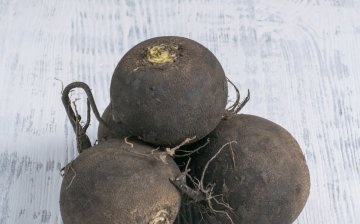
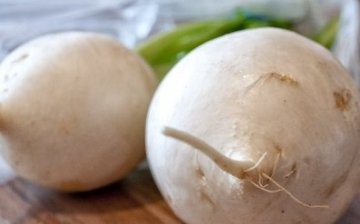


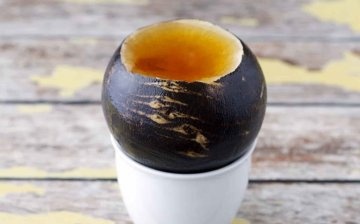







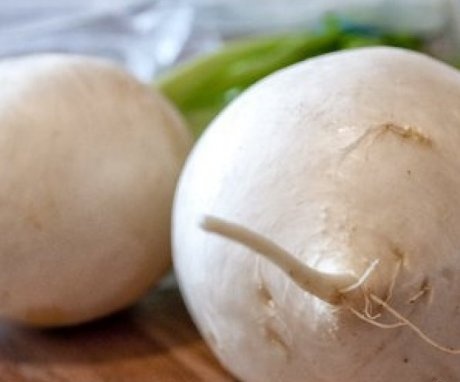
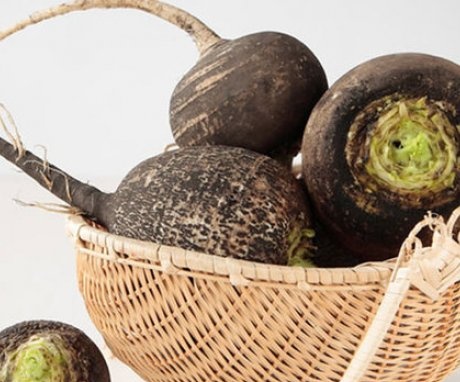



Radish is especially loved in our family. Especially black. We love to grate it on a grater and add it to the salad. It grows in the country and is unpretentious. I recommend everyone to plant it on the site. The benefits are amazing.
I know that radish is useful, it is used in many dishes and in the treatment of various diseases (for example, when coughing). But I don't really like her, and my family too, so we eat her extremely rarely.
When treating cough, our family always uses radish with honey. I don’t even know the best folk remedy, and it is not difficult to grow it on my own in the garden, it is not a whimsical vegetable at all.
Another useful property of the radish about which little is written. Nitrates and other harmful substances do not accumulate in root crops. Even a radish growing near the road will be an environmentally friendly product.